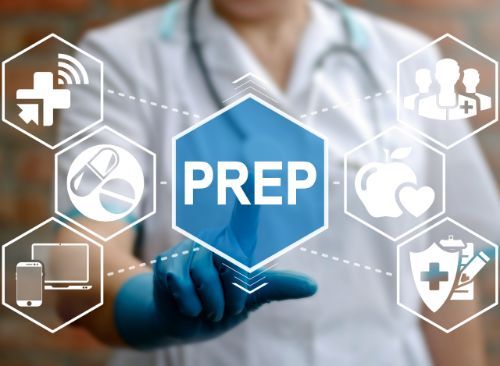Incidence of STIs Stabilized Among Gay and Bisexual Men Using HIV PrEP
After widespread implementation of HIV pre-exposure prophylaxis (PrEP) among gay and bisexual men in Australia, population-level incidence of chlamydia and gonorrhea stabilized, allaying fears that PrEP would lead to a rise in STIs, a recent study found.

Rates of bacterial sexually transmissible infections stabilized among gay and bisexual men in Australia who received HIV pre-exposure prophylaxis, according to a recent analysis of sentinel surveillance data.
The study, published in The Lancet Infectious Diseases, included 22,730 gay and bisexual men who had been prescribed PrEP between Jan. 1, 2016, and Dec. 31, 2019, and were tested for sexually transmitted infections at least twice during that time. Data were from a network of clinics that make up the Australian Collaboration for Coordinated Enhanced Sentinel Surveillance of Sexually Transmissible Infections and Blood Borne Viruses (ACCESS) system.
“This study represents the largest group of PrEP users monitored for STIs over time globally, and gives us a unique opportunity to explore the impact of large-scale PrEP implementation on STIs in the community,” lead author Michael Traeger, a research assistant at the Burnet Institute in Melbourne, Australia, told Contagion.
During the observation period, the incidence rate of chlamydia was 43.7 cases per 100 person-years, the incidence rate of gonorrhea was 37.8 cases per 100 person-years, and the incidence rate of syphilis was 9.4 cases per 100 person-years.
Incidence of chlamydia fell from 48.7 cases per 100 person-years in July-December, 2016, to 42 cases per 100 person-years in July-December, 2019. Incidence of gonorrhea fell from 45.5 to 37.2 cases per 100 person-years. The declines were most pronounced in the first 18 months of the study period before stabilizing as PrEP uptake became more widespread. Incidence of syphilis increased from 6.2 to 9.8 cases per 100 person-years.
“Our analysis shows that over four years of PrEP implementation in Australia, rates of STIs such as chlamydia and gonorrhea have mostly stabilized among people who use PrEP,” Traeger said. “Importantly, the data highlight that PrEP implementation in Australia has not led to exponentially increasing STI rates, and that PrEP users are tested for STIs frequently.”
Overall, 44.5% of study participants were diagnosed with any STI during the study period. More than a third of all infections were among 5.7% of participants who were diagnosed with five or more STIs.
The study authors said the decline and then stabilization of chlamydia and gonorrhea could have been influenced by changes in the cohort population, with those at a lower risk of STIs initiating PrEP later in the study period. Criteria for prescribing PrEP also changed during the period, and high testing frequency also may have played a role.
“HIV PrEP is a highly effective intervention for reducing risk of HIV, and should be offered to anyone who is at risk of HIV or would like to be prescribed PrEP,” Traeger said. “Our data highlight that PrEP users are engaged in frequent STI testing, and fears about increasing rates of STIs following PrEP prescription should not stop patients being offered PrEP.”
Strengths of the study include that it captured an estimated 70% of all those dispensed publicly funded PrEP in Australia during the study period, long follow-up and frequent testing.
Limitations included that the ACCESS network may not be representative of all gay and bisexual men in Australia, individuals may have been diagnosed with an STI outside of the network, some patients may have been misclassified based on a system that inferred status of gay and bisexual men, and it is possible that some men may have received a PrEP prescription without initiating treatment, the study didn’t include behavioral or symptom data, and it didn’t include data on STI treatment.
“It will be important to continue to monitor STIs among gay and bisexual men in the context of further PrEP uptake, as well as undertake more research into new interventions for preventing STIs,” Traeger said.
